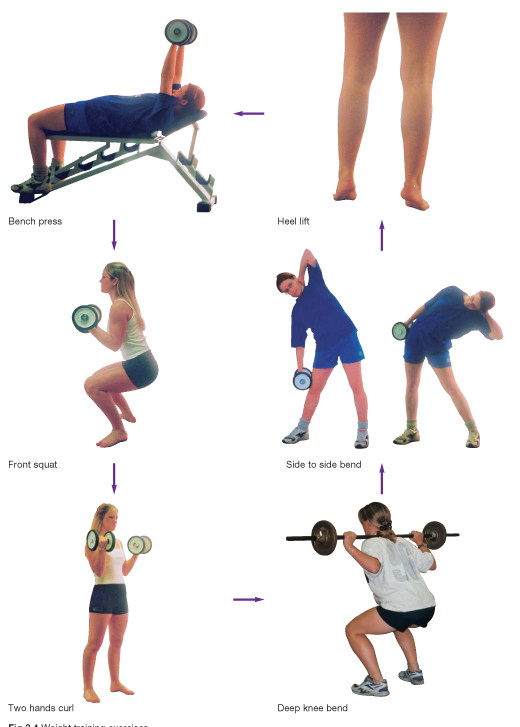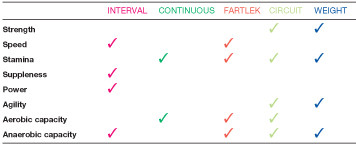Weight Training
Weight training can be very similar to circuit training. The individual completes a set of exercises in a prescribed order using weights, rather than doing a range of different activities. Each station concentrates on a different part of the body.
The number of times that a weight is lifted is called repetitions or reps.
As training progresses, the weights can be made heavier and rest periods can be reduced. As a general rule, it is agreed that in order to increase strength a person should lift heavy weights but with few reps. To increase stamina a light weight should be lifted but with a large number of reps. An example of a weights circuit is shown below.


There are two main variations of weight training.
1. Isometric weight training – this involves lifting the weight and holding the muscular contraction for up to 5 seconds, then relaxing before repeating the exercise. This means that the overload of the muscle takes place when the contracted muscle fibres are still. They remain at the contracted length; they do not move. This type of contraction develops strength rather than endurance.
2. Isotonic weight training – this involves raising and lowering the weights repeatedly and rapidly. This means that muscle overload is taking place as the muscle fibres move: they are continually shortening and lengthening.
This type of contraction develops stamina as well as strength.
The advantages of weight training are that it can be:
- a fast way to build up strength
- adapted to suit most sports
- carried out easily on multi-station weight machines

